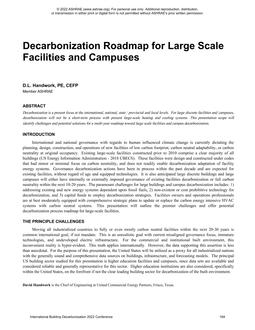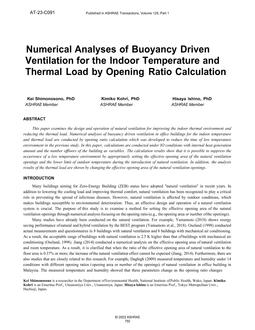
TO-22-C067 – HVAC Design Considerations and Indoor Environmental Optimizations for a Cannabis Flowering Room
Click here to purchase
The global cannabis market is expected to grow at a compound annual growth of 14.3% from 2020 to 2027 due to rising legalization and the use of cannabis for the treatment of chronic ailments (Cannabis Cultivation Market Size & Growth Report 2020.). Indoor cannabis grow facilities are often preferred over outdoor growing facilities for improved environmental control and security (Gorman 2020). Cannabis cultivators are calling for improved heating, ventilation, and air-conditioning (HVAC) systems as they can make or break the success of the cultivation business. Because HVAC systems directly affect temperature and humidity, their capacity to control these parameters has a direct impact on the cultivation process (Breit 2019). Cannabis plants need various settings of temperature, relative humidity, and airflow rate during different stages of their growth. It is critical to precisely control the environmental conditions at each stage of growth for the plants to reach their full potential. Other challenging aspects of designing cannabis grow facilities include proper mixing of CO2 enriched air, contaminant prevention, and odor control. As plants grow larger, in the vegetative and flowering stages, they introduce more humidity to space through transpiration while requiring a decreased level of relative humidity. Latent load due to evapotranspiration becomes a driving force in designing HVAC systems for grow facilities (McGowan 2020). The HVAC system design, load calculation, indoor environmental conditions, containment prevention, odor control, and air distribution for the grow facility is investigated in a test case flowering room to provide improved growing conditions and control in the cultivation facility, optimal distribution of humidity, temperature, and CO2. The flowering room is selected for analysis as cannabis plants are the largest and require high amounts of water, lighting, and CO2 at this stage. The study is conducted through literature review and interviews with industry experts and growers, with the results confirmed using Computational Fluid Dynamics (CFD) analysis. An efficient design of HVAC systems for a typical cannabis flowering room is proposed and the results from the CFD analysis demonstrate the variations of temperature, humidity, airspeed, and CO2 concentration levels in the flowering room. The study summarizes best practices to control, optimize, and design HVAC systems for maximum harvest and quality of the crop in a cannabis grow facility. The findings of the study will benefit cannabis growers and industry experts in making an informed decision about HVAC system design & selection, operation, and controls for their facilities.
Product Details
- Published:
- 2022
- Number of Pages:
- 9
- Units of Measure:
- Dual
- File Size:
- 1 file , 1.8 MB
- Product Code(s):
- D-TO-22-C067
- Note:
- This product is unavailable in Russia, Belarus

